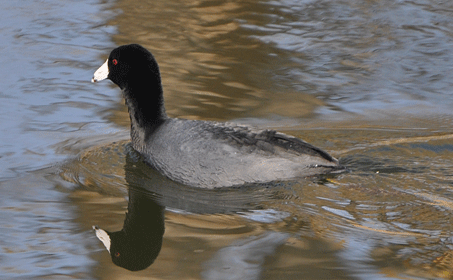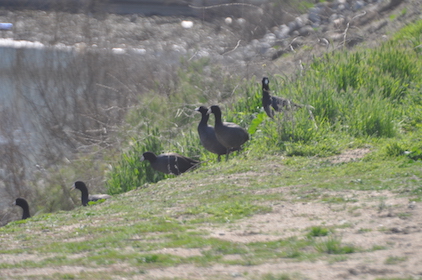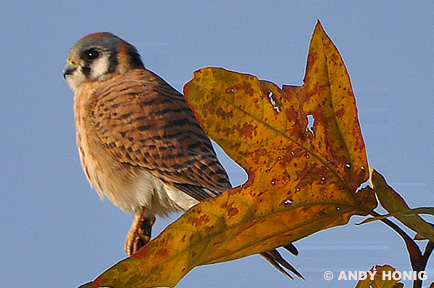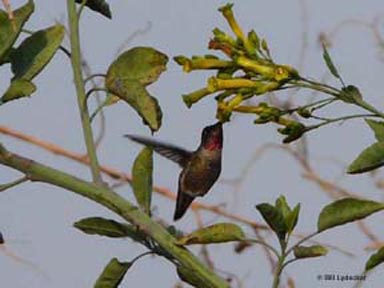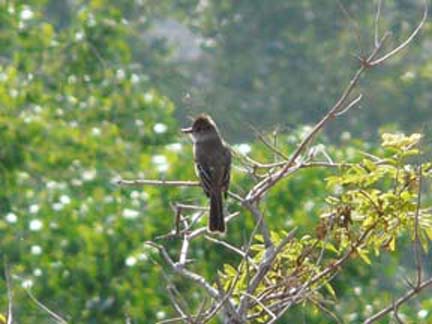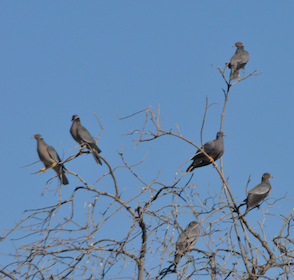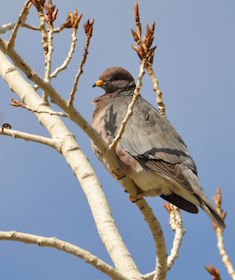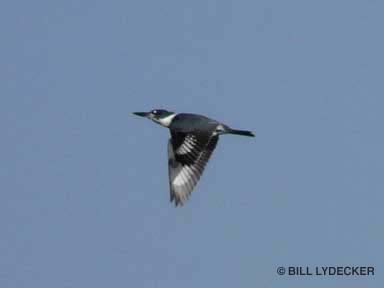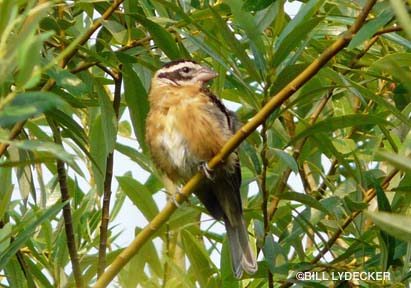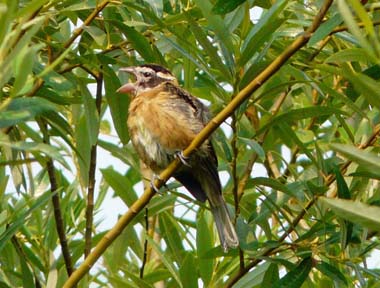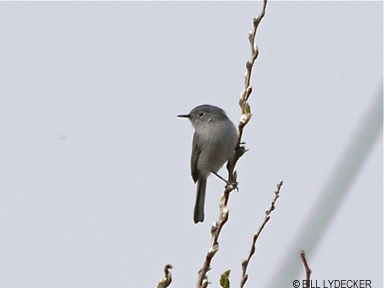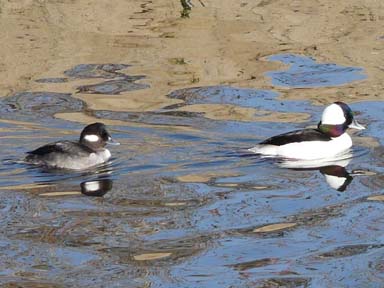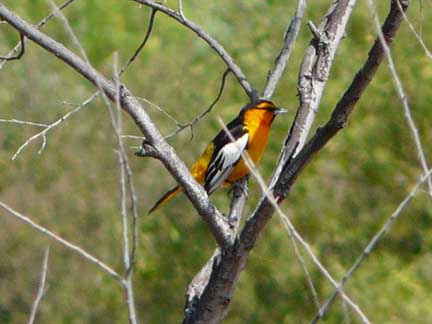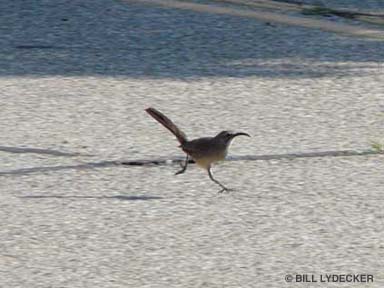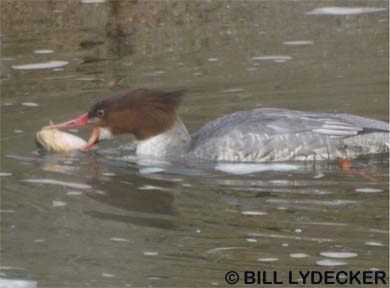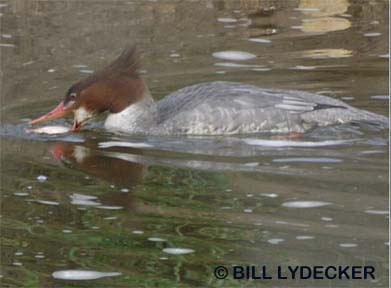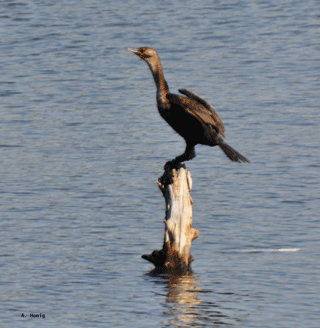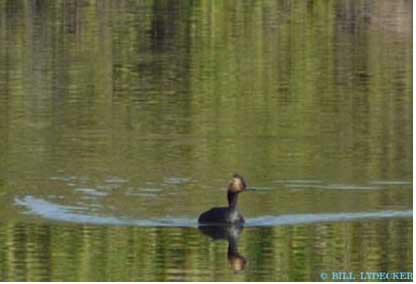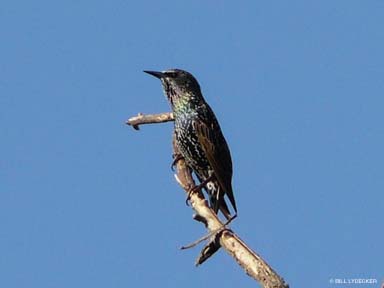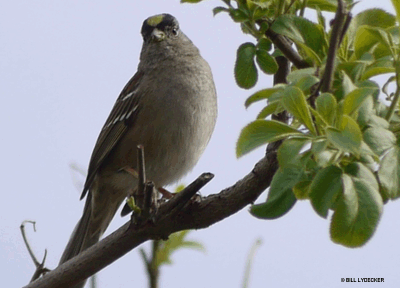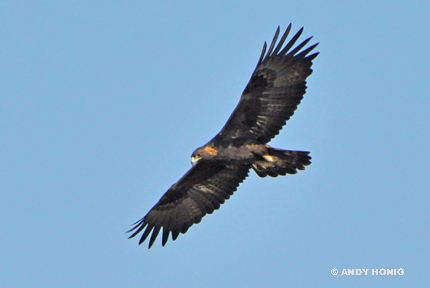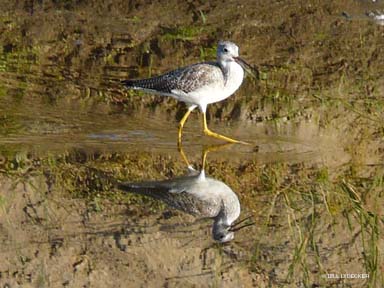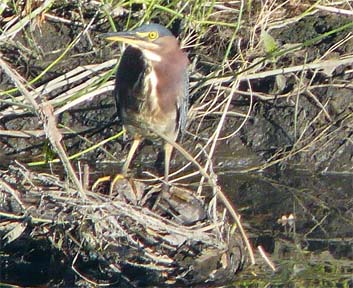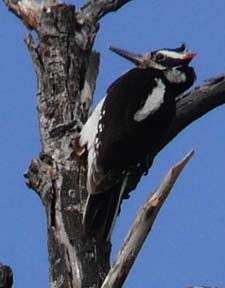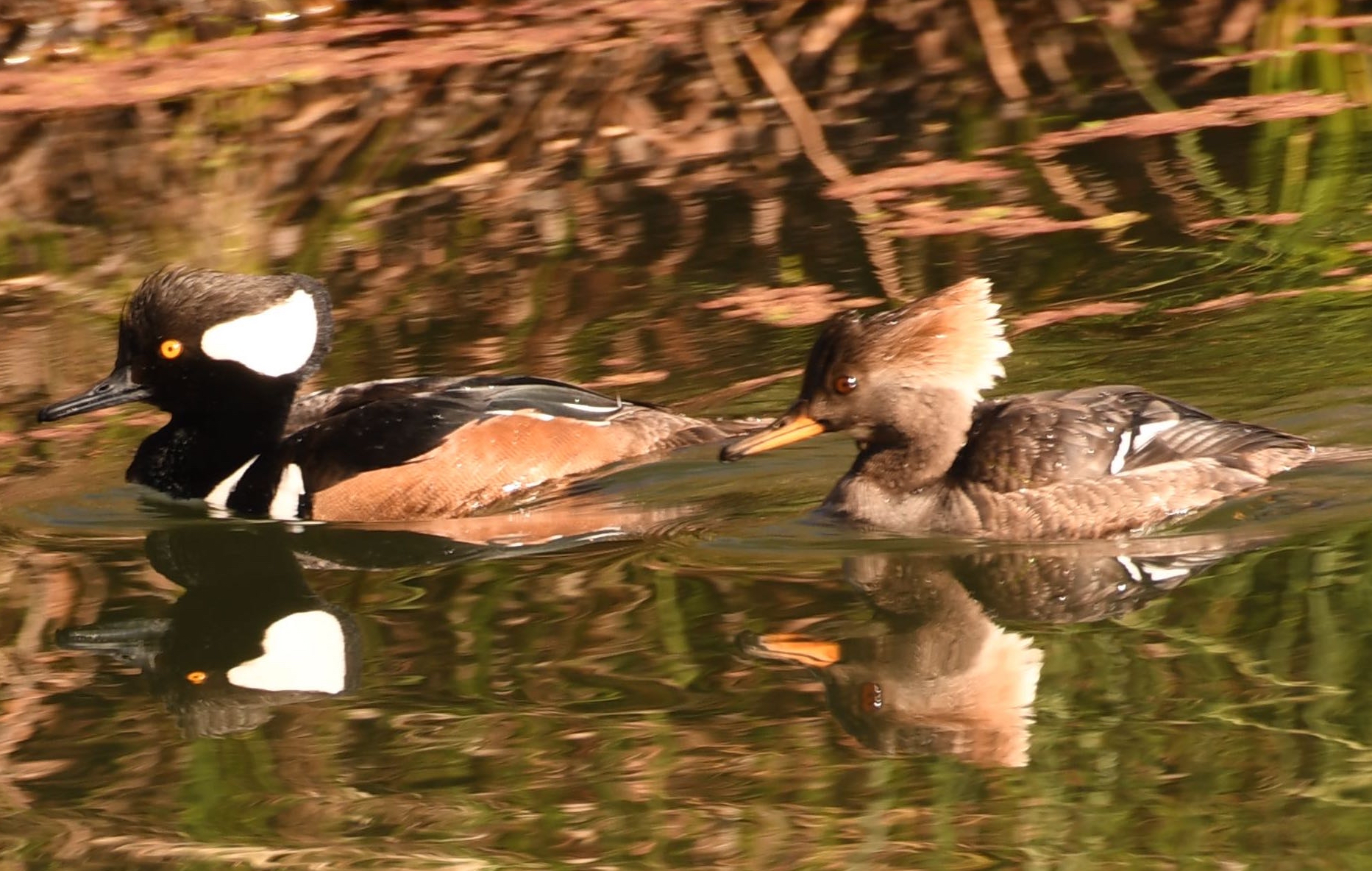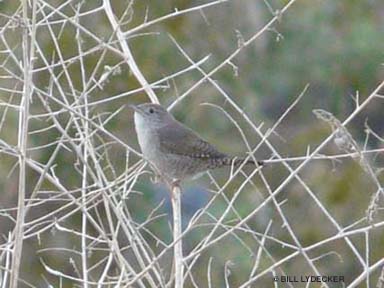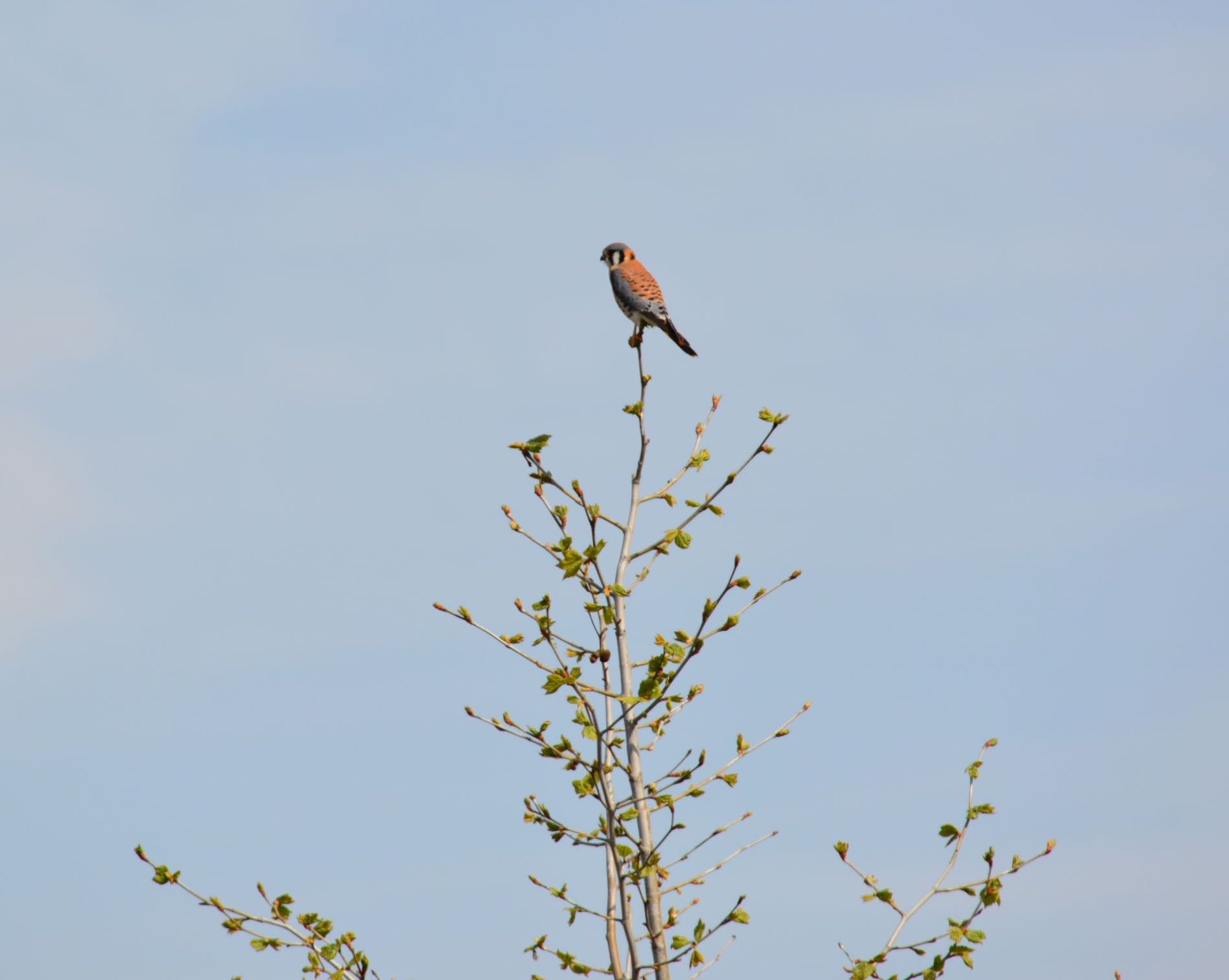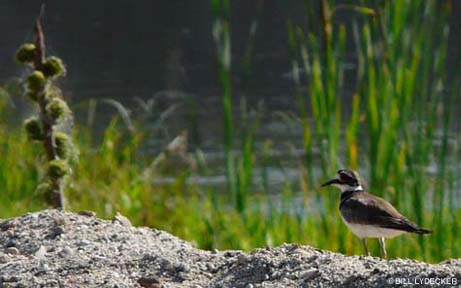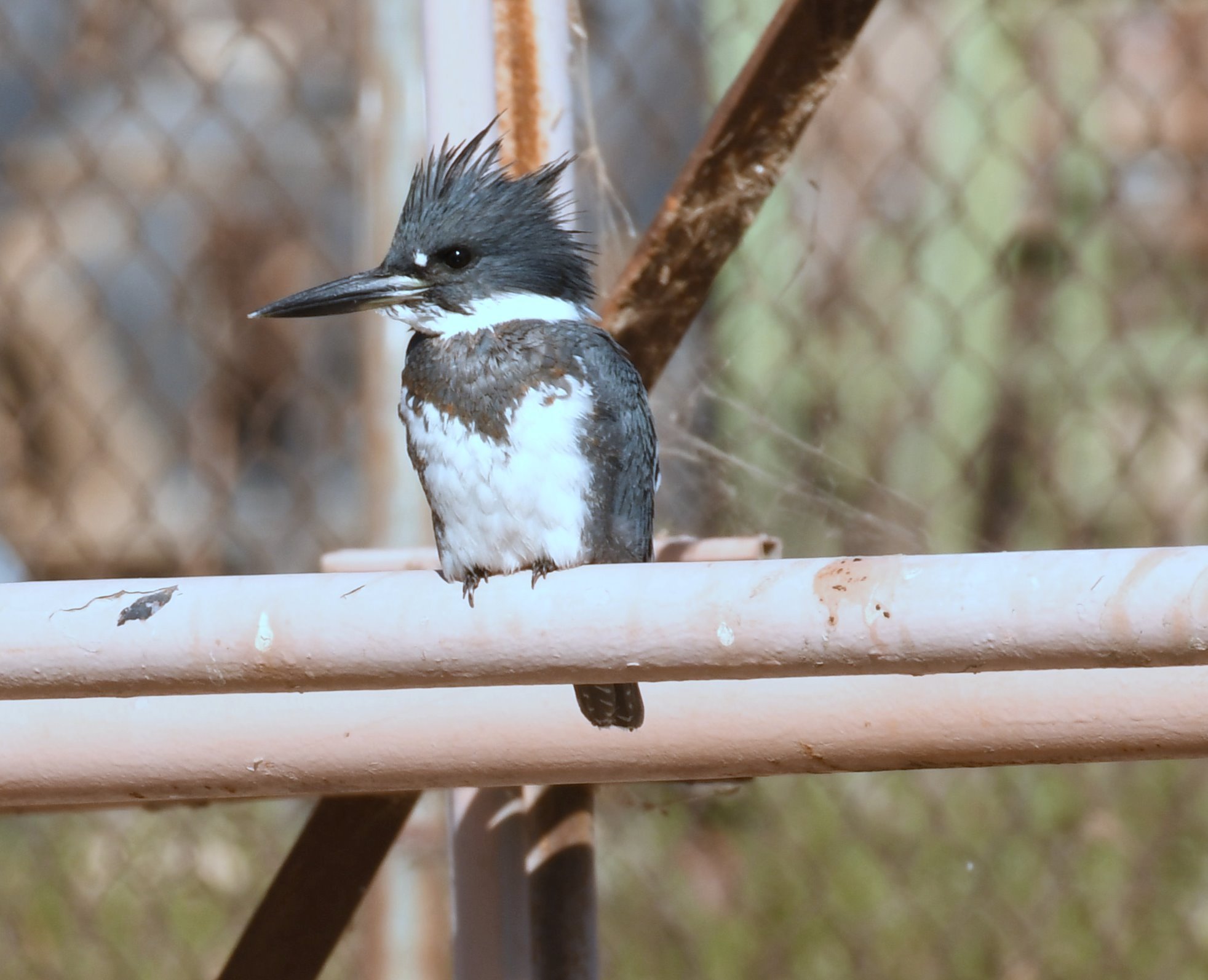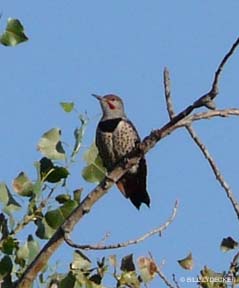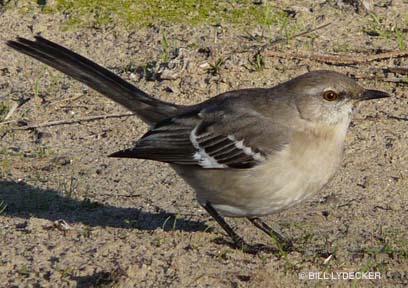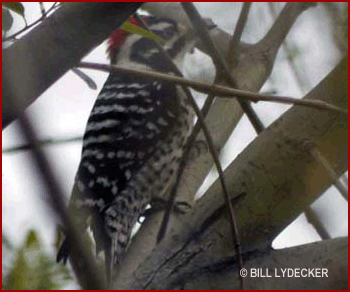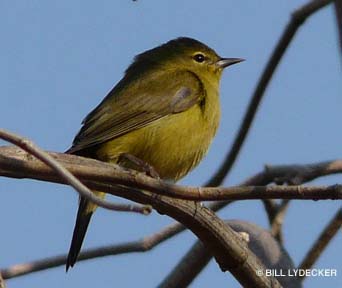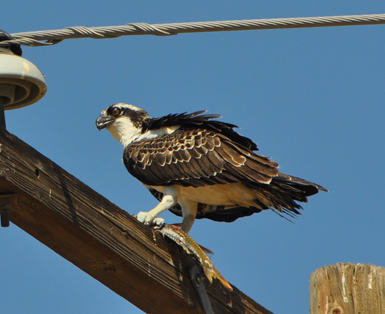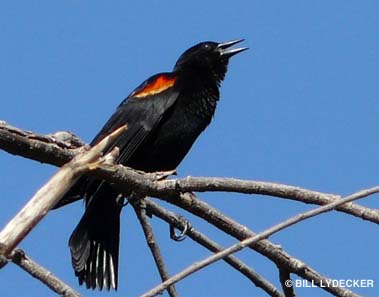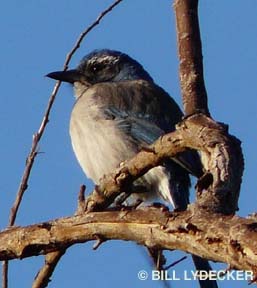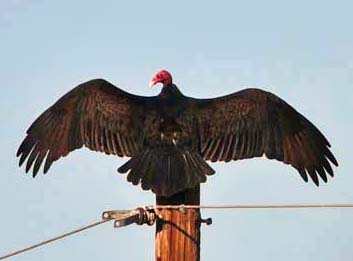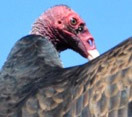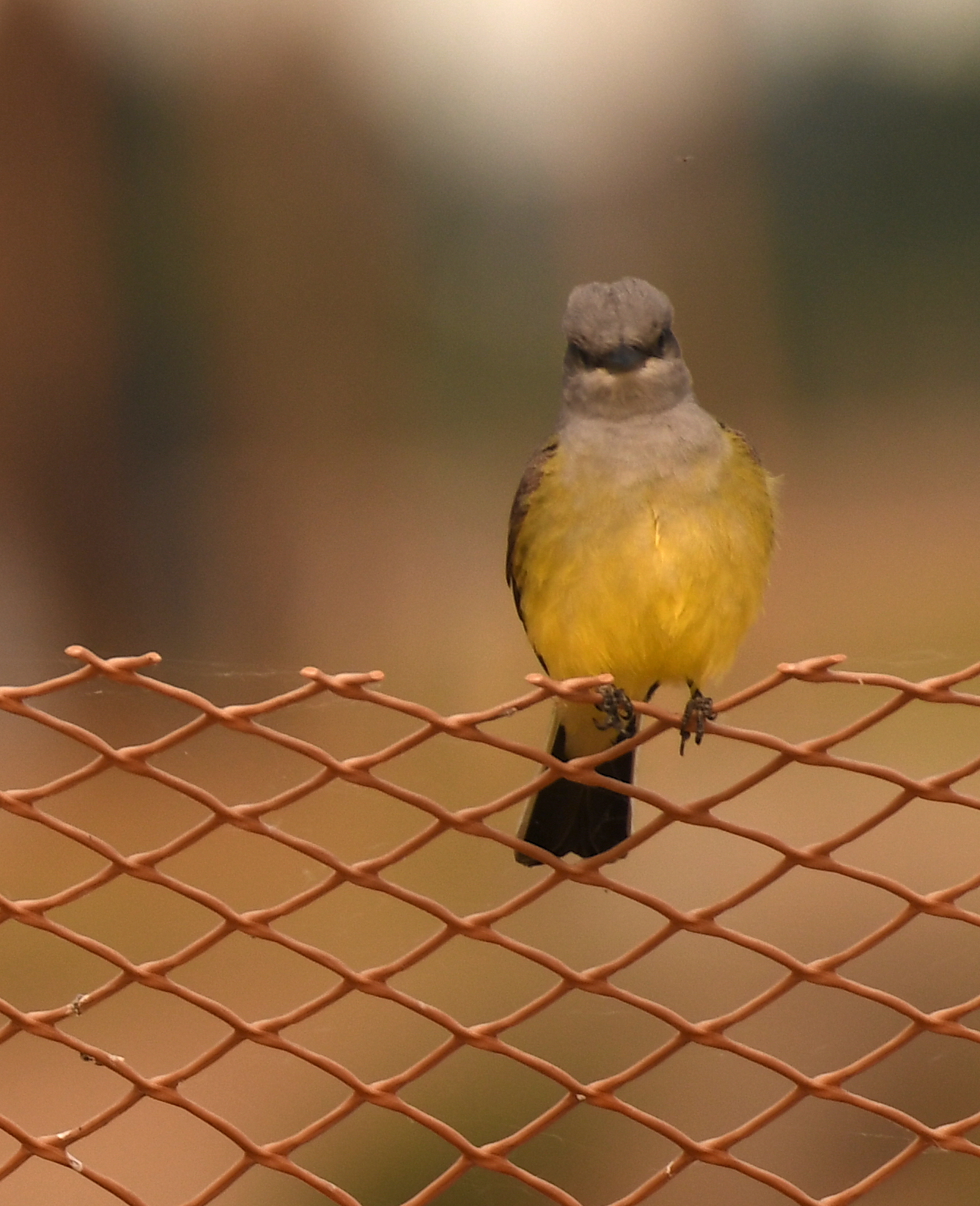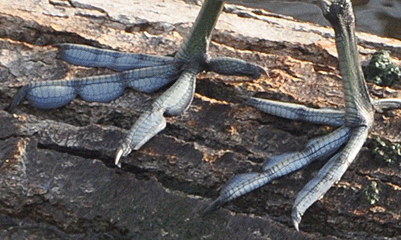
Coots are not ducks and do not have webbed feet; fleshy lobes or flaps on their toes create enough friction so they can paddle through the water, albeit in a jerky fashion. The flaps fold in when they are walking on land.
This is a female AMERICAN KESTREL, the only kestrel species native to the North American continent.
The reddish tail is typical of both males and females; however, males have a broad blue-gray band on the wings.
The kestrel is a falcon who hunts small vertebrates, such as mice and lizards and insects on the ground; it hovers and then pounces on its prey. While on the wing it may also go after flying insects or small birds.
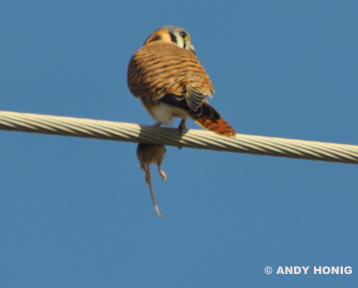
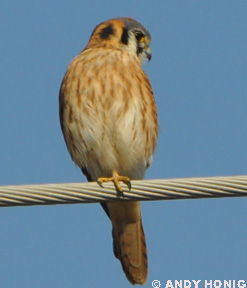
Sipping from a Tobacco Flower
This particular variety of tobacco is not native to California (although a plant used by the Indians as tobacco is also present on Panorama Vista Preserve.) (November 2008)
Notice the Hummingbird's tongue in the close-up. Hummingbirds eat insects they find in spiderwebs and also take spider silk to use in their nests. (June 2008)
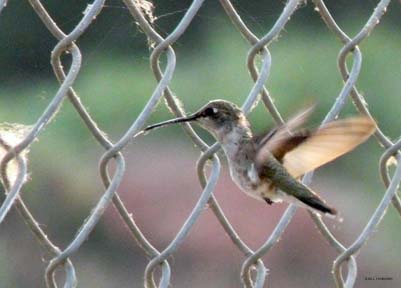
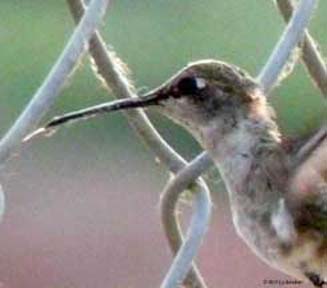
The Kern River runs through the Preserve and is bordered by good stands of willow, California sycamore, and cottonwoods, the kind of habitat that attracts birds such as them and other cavity nesters. The Ash-throated Flycatcher is not picky, however, and will also nest in boxes, pipes, and other manmade places. (April 2008)
The Ash-throated Flycatcher catches insects in the air but also forages on the ground. It is a migratory bird whose winter grounds are along the Caribbean and Pacific coasts of Mexico and Central America.
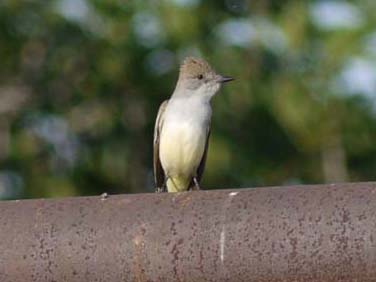
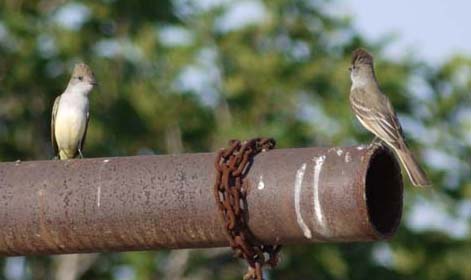
Sometimes called Mountain Pigeons, flocks of Band-tails are usually seen in mountain ranges near Bakersfield. Dark bands on their tails and white crescents at the back of the neck are distinguishing marks.
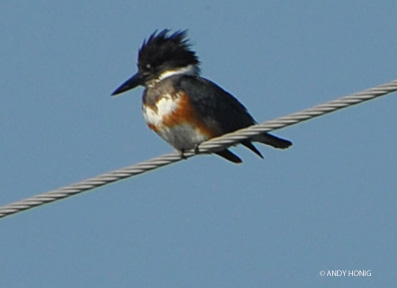
Female Belted Kingfisher, photographed December 2011.
The Belted Kingfisher is migratory. It dives after fish and other aquatic creatures. Likes habitats with places (trees or even powerlines) to perch and observe prey. Prefers clear, not muddy, water. With the orange chest markings, the female is more colorful than the male.
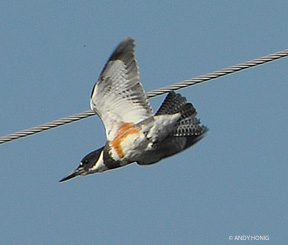
The Black Phoebe is a flycatcher which likes to be near water; it requires mud for its nests which it builds in tree cavities, dirt banks, boulders and rock faces. It often reuses the same nest site from year to year.
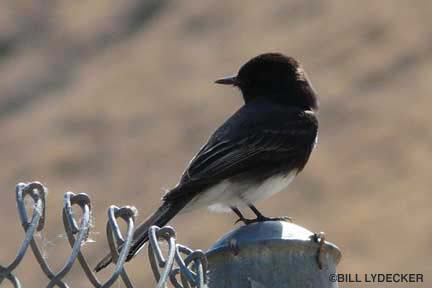
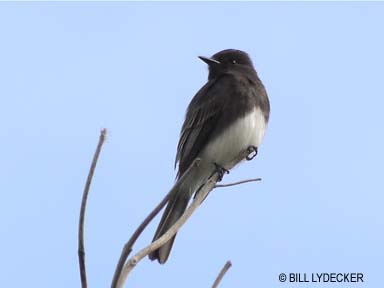
Perching Songbird, migratory from Mexico. In Mexico, monarch butterflies are a favorite food. Most birds find monarchs to be unpalatable but Black-headed Grosbeaks are able to stomach them. These usually show up at Panorama Vista in June or early July. They eat elderberries, weed seeds, insects, and spiders. The two birds above are female while to the left is a male.
To hear the Black-headed Grosbeak, go to the Cornell Lab of Ornithology, All about Birds
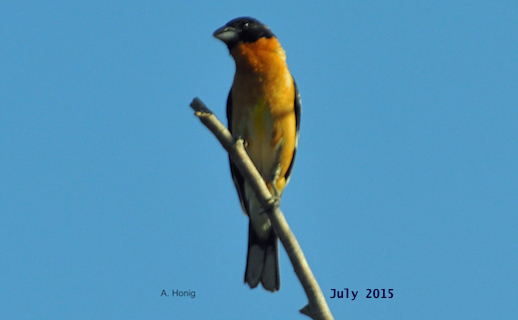
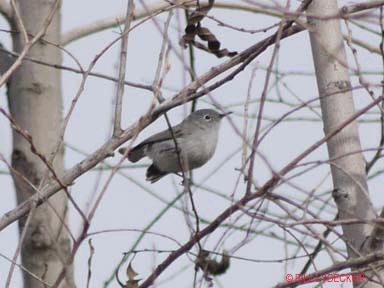
Migratory; wintering grounds include the lower Colorado River, the Pacific coast of Mexico, and northern Central America.
This pair of little ducks has mated for life. They find the small size of cavities made by Northern Flickers just the right size for their nests; nest boxes are an acceptable alternative. They dive for insect laravae, crustaceans, shellfish, and snails.
The riparian sycamore-willow-cottonwood habitat on the Panorama Vista Preserve attracts the Bullock's Oriole.
Its nesting season in California occurs between March and June.
Migratory from Mexico.
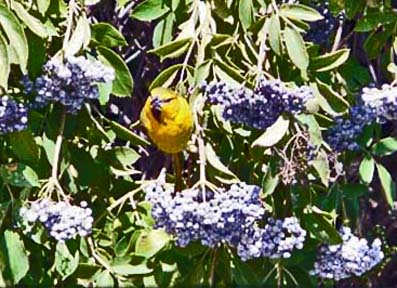
BULLOCK'S ORIOLE (First year male)(June 2008)
Young males are a lighter yellow than the older bird seen in the photo above.
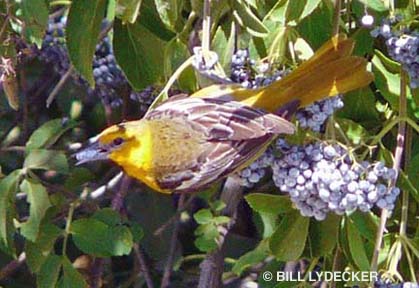
Bullock's Orioles eat insects, spiders and fruit such as these ripe elderberries.
CACKLING GOOSE
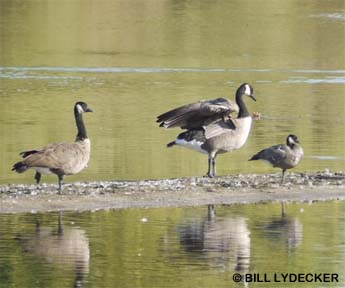
CACKLING GOOSE (far right) and two Canada Geese on a sandbar on the Kern River. (Oct. 2009)
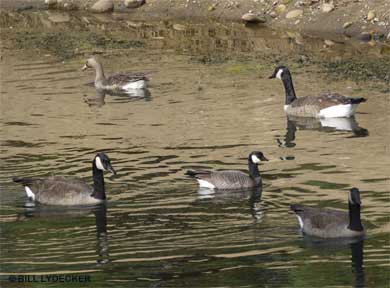
CACKLING GOOSE (middle foreground) and a Greater White-Fronted Goose (left background) along with three Canada Geese. (Oct. 2009)
The (Branta hutchinsii) is a separate species from the larger Canada Goose (Branta canadensis). The difference in size is very apparent in the first photo. California's Central Valley was once the primary wintering ground of Cackling Geese but now it is Oregon’s Willamette Valley. The Cackling Goose has a stubbier head and a rounder body than the Canada Goose which it otherwise strongly resembles.
In the second photo in the foregound, a Cackling Goose is swimming between two Canada Geese while at the top left is a GREATER WHITE-FRONTED GOOSE; this goose breeds in the Arctic but winters in the Central Valley of California, the Sea of Cortez, and the Gulf of Mexico.
CALIFORNIA QUAIL
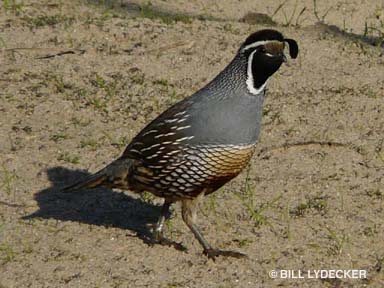
California's state bird struts his stuff. California quail require a brushy habitat where it forages for seeds and other plant matter. (January 2009)
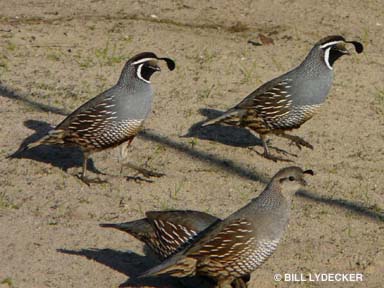
Covey of California Quail.
The female in the foreground has a gray face and a smaller topknot than the males; she also lacks the males' smudged brown belly spot. (January 2009)
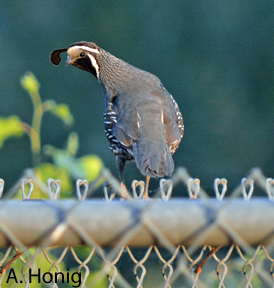
Male Quail June 2015)
The California Thrasher uses its curved bill to dig through leaf litter (in a thrashing motion) for insects, spiders, caterpillars, etc. It also eats elderberries and other fruits. (May 2008)
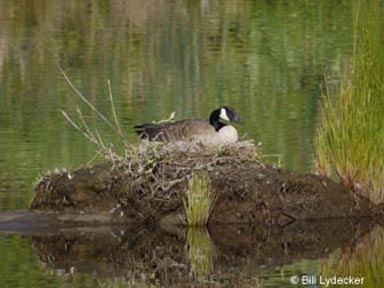
CANADA GOOSE on nest. (April 2008)
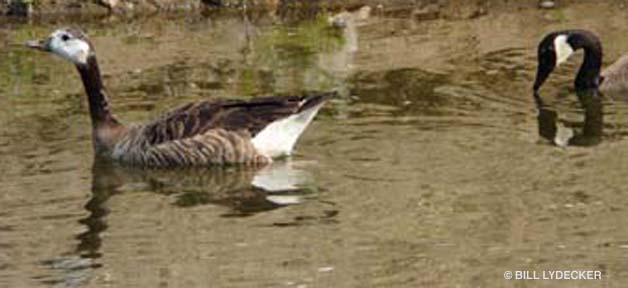
Two CANADA GEESE.
The one on the left is partially leucistic, i.e. the pigment on its head is white; compare it to the goose on the right.
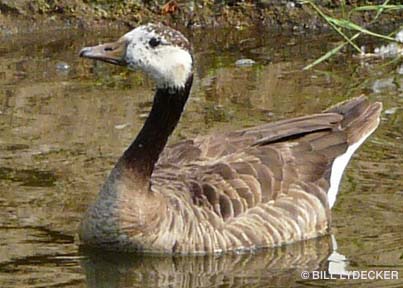
Close-up view clearly showing the whitish head of the leucistic goose. (July 2008)
Canada Geese are migratory on the Preserve. The leucistic goose above appeared in July 2008 and appears to have returned to the Preserve in August 2009.
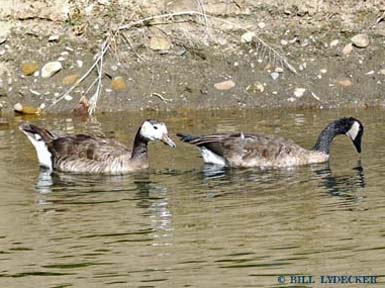
Canada geese form life-long relationships so most likely this is the same pair seen above.
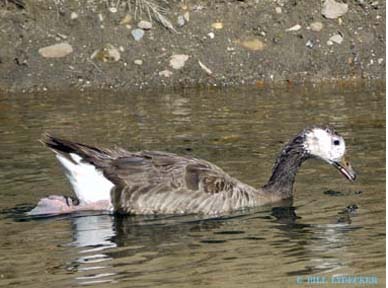
These two geese were observed in the company of five other Canada Geese; last year there the group also numbered a total of seven. (August 2009)
This female is in the process of downing a freshly caught catfish.
The Common Merganser is a large duck which finds its food (fish, small clams and crustaceans, insects, etc.) by sorting through the sediment or rocks of the river bottom or by cruising along with its head underwater looking for prey. Sometimes called a sawbilll, the serrations on its bill prevent the prey from slipping away. Southern California is part of its winter range. The Common Merganser prefers fresh water and is an indicator species for waterway contamination by pesticides and industrial wastes. Luckily, there are few large farms and no industries upstream from the Preserve.
The Double-Crested Cormorant is migratory in interior California and is associated with freshwater rivers and lakes. It dives for fish and divides its time between fishing and resting, as seen here on the Preserve.
Once summer arrives in Central California, these cormorants head north to breeding sites ranging from Utah and Wyoming into Canada and east into the Great Lakes area. Their population declined in the era when use of DDT was allowed but has rebounded since the pesticide was banned.
An orange spot on the head and neck is an identifying mark.
In 1890, one hundred European Starlings were introduced into New York City's Central Park as a misguided tribute to William Shakespeare because he mentioned the species in one of his works.
Starlings now number in the hundreds of millions and have spread throughout the United States. They have become a major pest in many areas and are a special threat to cavity-nesting native bird species such as the Northern Flickers, Tree Swallows, Wood Ducks and Hairy Woodpeckers, all of which have been observed on the Preserve. (October 2008)
Breeds in Alaska, the Yukon and British Columbia but winters in Washington, Oregon, and California into Baja California Norte and up the Colorado River. (Feb. 2010)
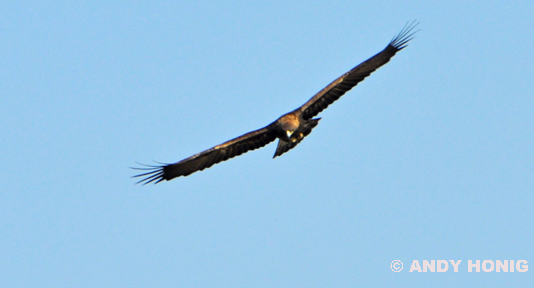
GREAT EGRET
Great Egrets feed on a variety of vertebrates and inverte- brates, e.g. small fish, crayfish, frogs, tadpoles, and insects.
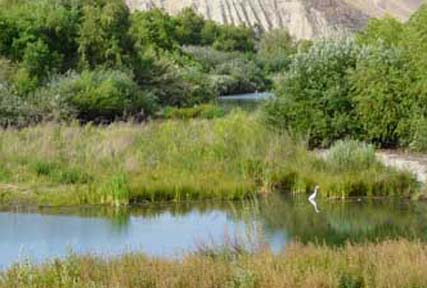
( May 2008)
Panorama Bluffs in back ground.
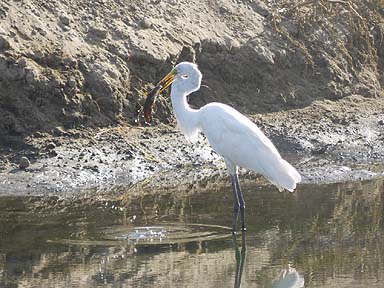
(1) The egret has caught a large catfish...
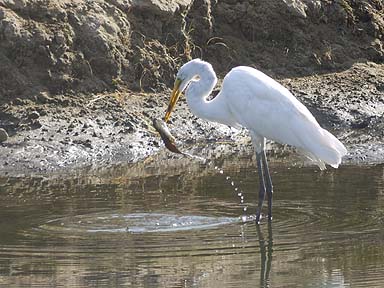
(2) ... has skewered it and is dipping it into the water.
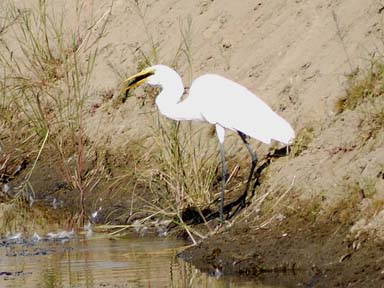
(3) The fish has been lined up for swallowing longwise.
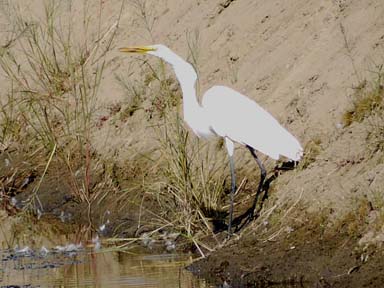
(4) A big gulp and down it goes.
GREAT HORNED OWL
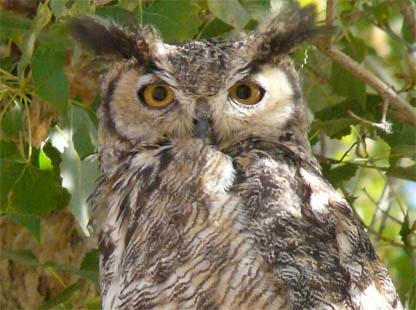
From its perch the Great Horned Owl spots its prey and suddenly pounces. It may also walk on the ground, not very gracefully, in pursuit of small game. It eats a wide variety of game such as rabbits, hares, squirrels, waterfowl, and lizards and other reptiles. (July 2008)
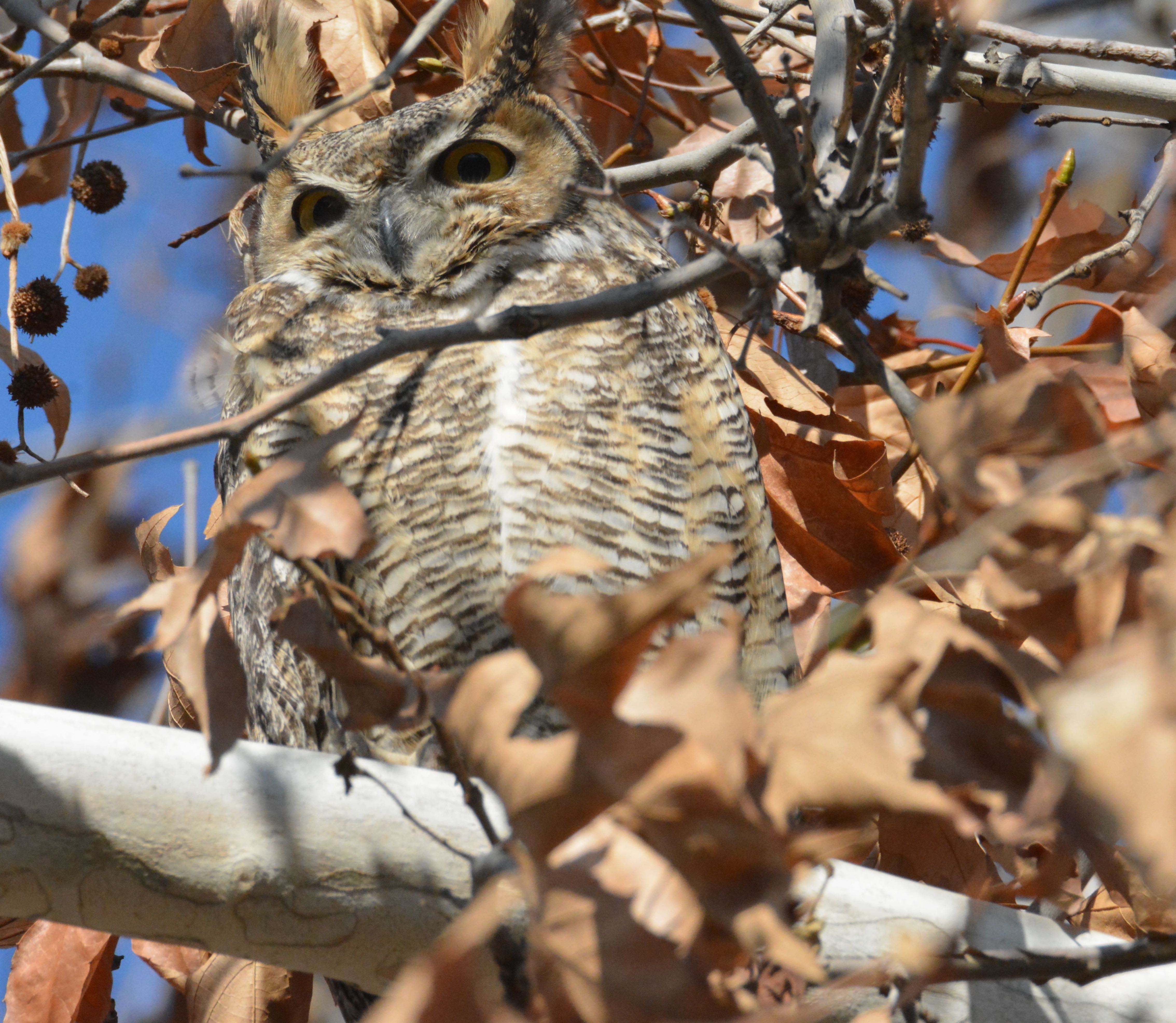
Great Horned Owl in Sycamore (Jan. 12th, 2016)
A migratory wading bird, it feeds on fish and invertebrates. Its breeding grounds are in Canada and it winters in southernmost California, Mexico, Central America, and the Caribbean.
The dark green brownish coloration, shy ways and preference for thick vegetation make this bird hard to spot. It fishes close to bank's edge, as here, but also goes into deeper water to plunge after fish to grab or stab. The clever Green Heron is known to draw fish to it by throwing bait or a lure into the water: bits of twig or leaves, berries, feathers, and insects. Other herons do not use tools in this manner. (August 2008)
The red splash on the back of the head is a distinguishing mark of this handsome little woodpecker along with large whitish spots on its dark wings. It is known as a very nimble climber. (May 2008)
You may have seen this bird in your own back yard; it loves shrubby areas in residential areas but is also found in wilder areas such as the Preserve. (October 2008)
The killdeer is a migratory bird who likes to be near water and to nest on gravel or sand. It eats small fish, crayfish and other aquatic life, seeds, worms, and insects. It is a species of plover.
These fuzzy chicks have a single dark band across the chest but when grown will sport a double band of dark stripes; this marking distinguishes the killdeer from other plover species.
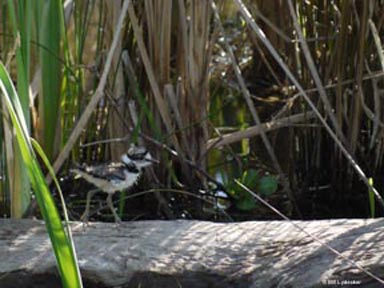

MALLARD
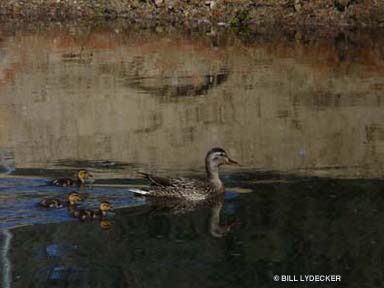
Female and ducklings (June 2008)
This is the most abundant of duck species in North America. It nests near water but on the ground in or under protective vegetation.
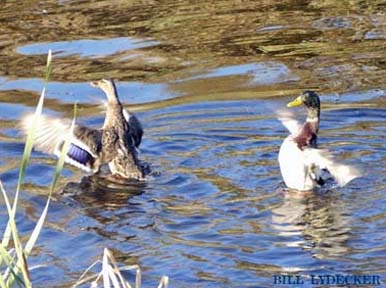
(August 2009)
The mallard is one of those creatures who can sleep with one eye closed and the other peeping open, simultaneously asleep and wakeful, two brain hemispheres working independently.
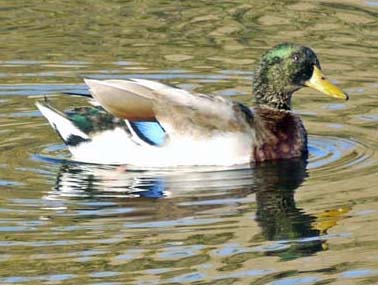
The bright blue patch on the mallards' wings show up very clearly.
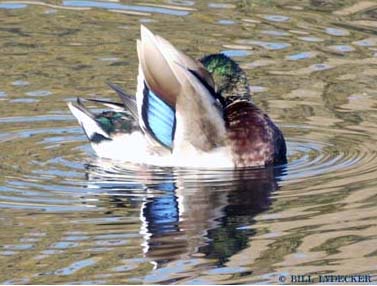
The number of Northern Flickers has been declining nationally, possibly due to habitat decline and competition for nest cavities with European Starlings (whose numbers are on a sharp increase; see above entry for European Starlings). This is unfortunate because other bird species make secondary use of pre-existing flicker nest cavities but starlings will aggressively push them out; included on this list are Wood Ducks, Buffleheads, other woodpeckers, Tree Swallows, and some owls.
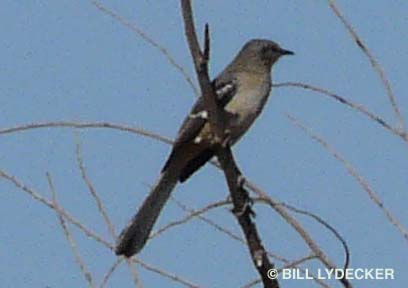
(October 2008)
This bird is common in the urban Bakersfield area and, in fact, is found all over the US, throughout Mexico, and in the Caribbean.
The mockingbird is known not only for its large song repertoire but also its ferocity in defending its territory. The back yard birder has seen many a cat reduced to cringing misery by the dive-bomb tactics of an irritable mockingbird.
The range of the Nuttall's Woodpecker stretches from northern California into northern Baja California Norte. It is usually found in oak woodlands but may also be found in riparian sycamore-cottonwood areas, as here on the Preserve. In fact, it is more likely found in riparian zones the farther south in its range it is observed. It probes and softly taps branches in search of insects, caterpillars, etc.
Migratory; some of these warblers migrate in winter from Canada, some from only as far away as the Pacific Coast. (January 2009)
Fish tops the menu for the osprey and is in fact the only item on it. The osprey catches its prey by diving feet first into the water; like other raptors, it has a formidable set of sharp, curved talons with which to seize its quarry. This osprey has caught a carp and has carried it to a nearby telephone pole to eat. (Sept. 2012)
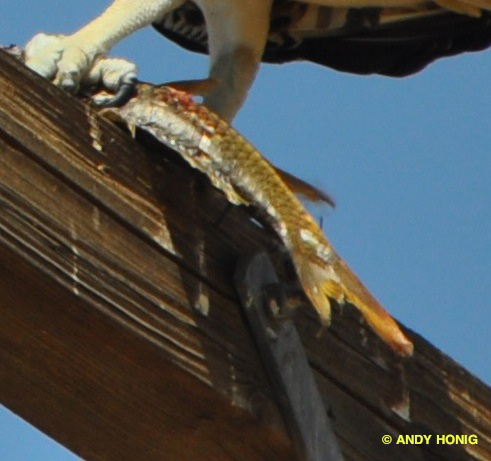
The osprey had eaten the head of this carp by the time the photographer came along.The river was low and pools were drying out. It was the osprey-equivalent of shooting fish in a barrel.
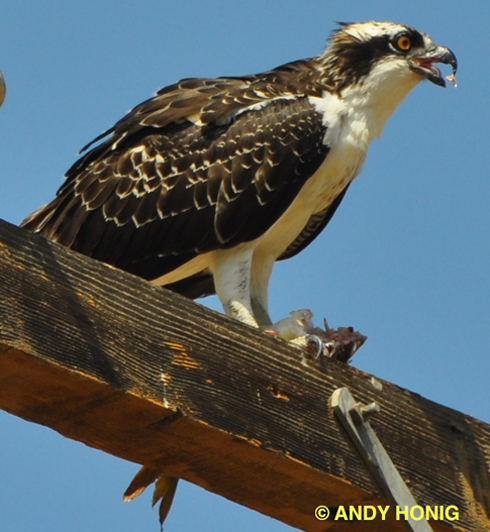
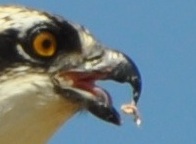
The osprey has a sharp hooked bill, useful for tearing and spearing bits of the prey.
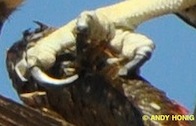
... and very strong, powerful talons.
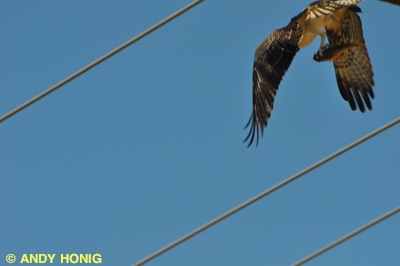
Suddenly the osprey flew off. It has positioned the fish so that it is lined up in an aerodynamically position: head first (or what is left of it).
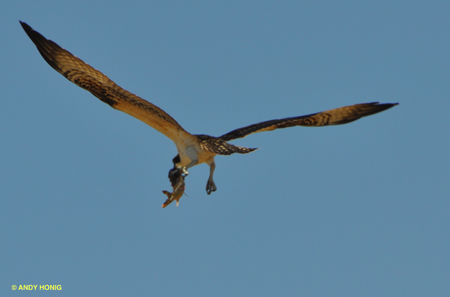
The wingspan of an osprey can be nearly 6 feet.
PHAINOPEPLA
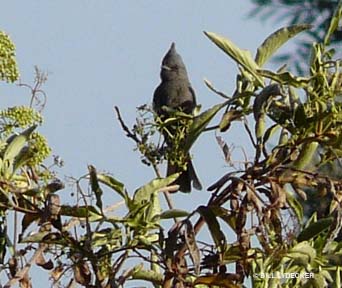
In an Elderberry Bush. (October 2008)
The range of the Phainopepla is from the San Joaquin Valley into Arizona, Central Mexico, and Baja California.
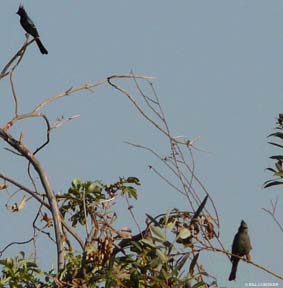
Pair of Phainopeplas, the female at the top left, the male at the lower right. (October 2008)
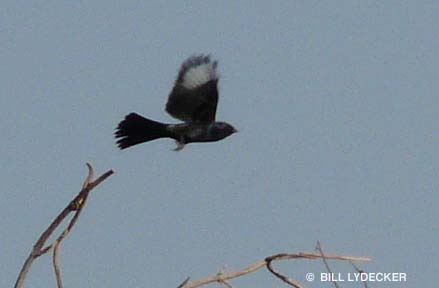
The male Phainopepla is black. The large white patches under his wings show as this bird is taking off after an insect. Phainopeplas eat berries (e.g. elderberries) and flying insects.
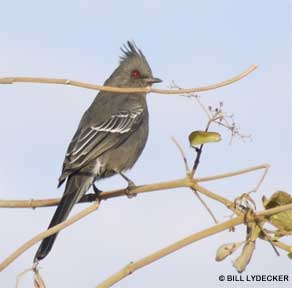
The female is gray; the crest on her head shows up clearly in this profile. She is perched on a dry elderberry branch. (October 2009)
Red-tailed Hawks soaring above the Preserve are a common sight; they take advantage of thermal air currents that spiral outward from the face of the Panorama Bluffs.
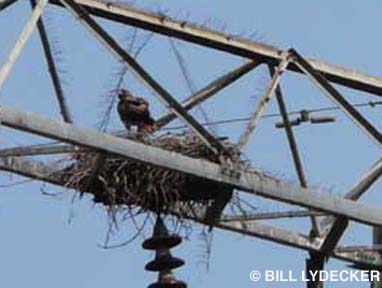
RED-TAILED HAWK on Nest, April 12, 2008. Red-tailed Hawks often reuse the same nesting site over several years. This place was used for at least two consecutive years.
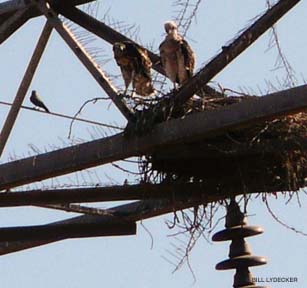
Same Nest One Month Later, With Two Chicks
Trees are good for nesting but a powerline tower is a perfectly acceptable alternative.
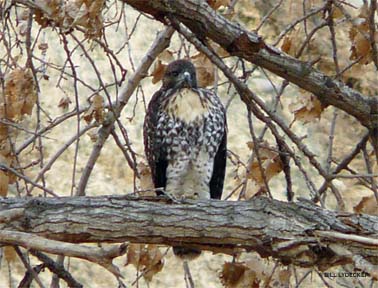
Another month later (June 2008)
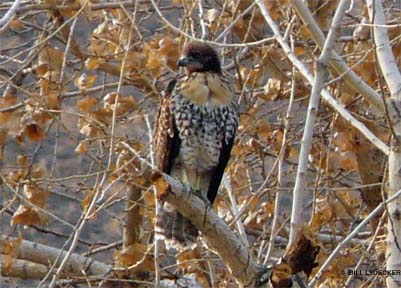
These young hawks were spotted across the canal from the powerline nest. They were making what the photographer took to be "feed-me" sounds.
The range of the Red-Winged Blackbird runs from northern Canada and through the United States and Mexico to the Guatemalan border; it is very numerous. It forages in a wide variety of habitats although riparian areas are common. It eats weed seeds but its strong liking for grain fields makes it much disliked by farmers.
The Red-Winged Blackbird should not be confused with the endangered Tricolor Blackbird whose red wing patch is smaller and is edged with white or cream color rather than yellow. (June 2008)
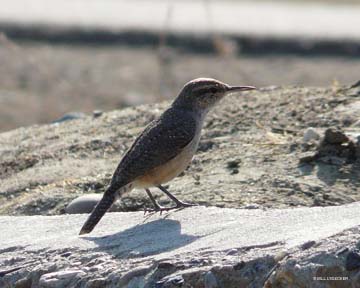
(October 2008)
The Rock Wren is usually found in dry areas with exposed rocky areas such as cliffs or bluffs, gravel washes, and boulders. It lives on insects.
ROSE-RINGED PARAKEETS
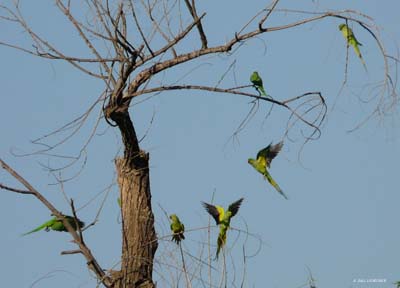
Non-Native species. Flocks of Rose-ringed Parakeets are a common sight in the Bakersfield-Kern River area-- on the Preserve and in Bakersfield neighborhoods. (October 2008)
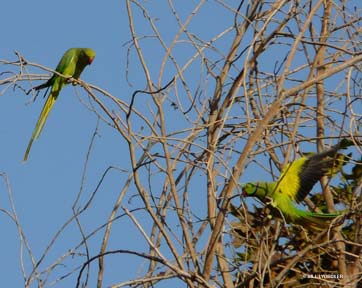
They are said to have escaped or been let loose from a local aviary in the 1970s during a large wind storm.
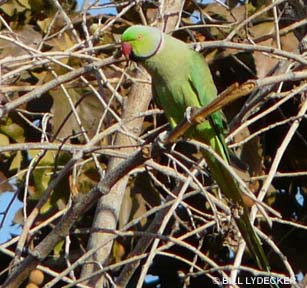
SAY'S PHOEBE
(Image not available)
A flycatcher, it lives primarily on insects and gets the water its body needs from the insects. Unlike the Black Phoebe, it does not usually use mud in its nests. (October 2008)
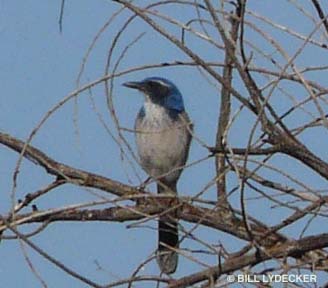
The Western Scrub Jay is dull blue in color with white "eyebrows" and does not have a head crest . Food resources available to jays on the Preserve include insects, spiders, and elderberry; acorns would have been on that list in the era when oak trees grew on the Preserve. Since they like to cache food for later consumption, jays would have played an important role in oak dispersal although their ability to remember cache sites is so good that probably most acorns were eventually retrieved and eaten. (October 2008)
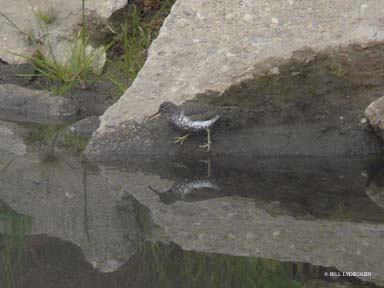
This species of sandpiper winters in fresh water habitats of coastal California and the Central Valley (as well as Mexico and the Caribbean.) It arrives from the north in fall. Here on the Preserve it searches for freshwater invertebrates along the shores of the river, its inlets, and canals. (June 2008)
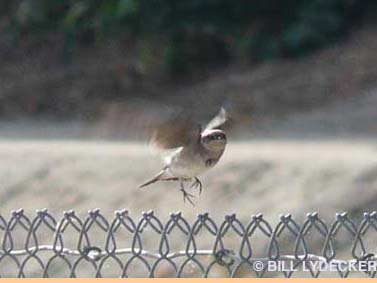
Prefers habitats near water; it nests in standing dead trees with cavities perhaps originally made by the Northern Flicker. Nest boxes are an acceptable alternative. This is a juvenile. (May 2008)
The turkey vulture regularly migrates through Kern County in the fall. This photo clearly shows it characteristic bald red head and impressive wings which can span six feet.
In the past, people have feared it as a predator that goes after livestock and small animals. In reality, it is only a scavenger whose keen sense of smell leads it to carcasses of already dead animals, ranging in size from dead tadpoles to cows. It is not a picky eater. It makes a hissing sound that would make Darth Vader sit up and take notice, but in nature the turkey vulture provides valuable sanitary engineering service. (October 2008)
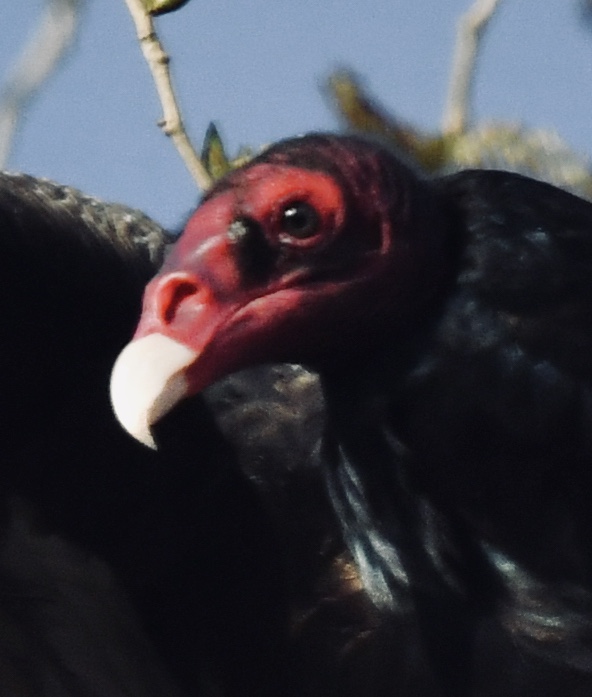
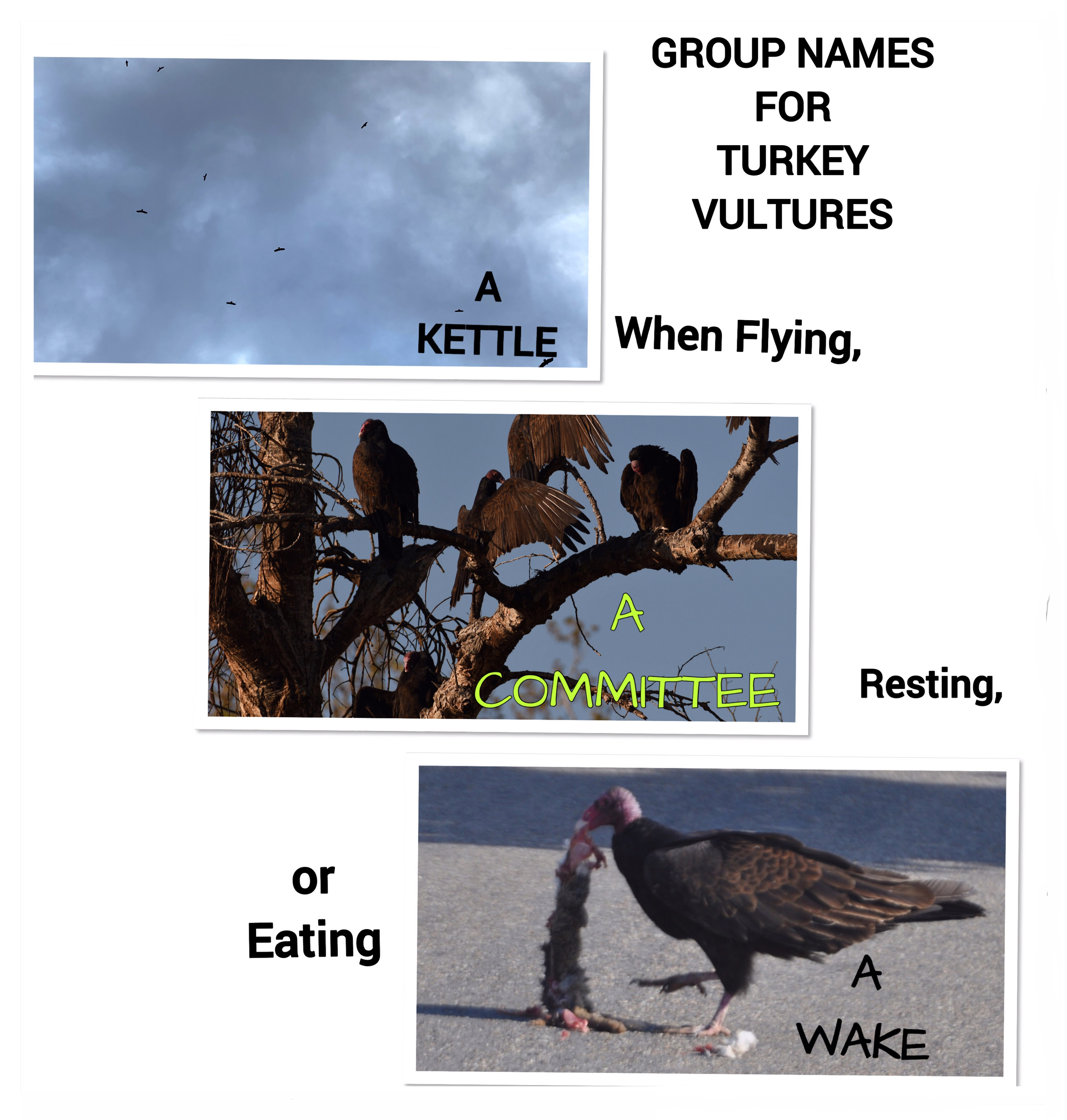
Breeding season for the Western Kingbird extends over the trans-Mississippi West, but in winter it migrates to the California, Pacific coast of Mexico and Central America and southern Florida. It lives primarily on insects but may also feed on elderberry fruit. (June 2008)
The female builds her nest with various plant fibers, grasses, twigs, cottonwood bark and fuzz, and man-made found objects; here some kind of green string or tape has been incorporated into the nest. This could be a hazard to nestlings who might tangle their feet up in it. (April 2009)
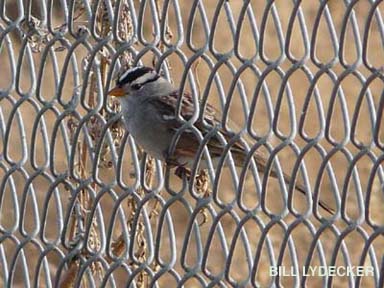
This songbird's winter territory includes interior California. Back yard birders often see groups of these swallows flocking around their feeders. (October 2008)
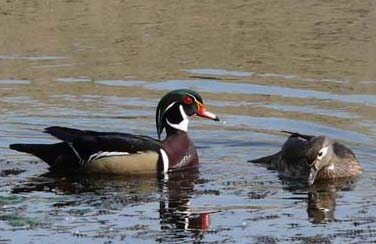
The wood duck population was on the decline in the U.S. until passage of the Migratory Bird Treaty Act of 1918. It has had to struggle with loss of habitat however. It nests in tree cavities made by woodpeckers but will also use nest boxes. Several boxes have been installed on the Preserve. (April 2008)
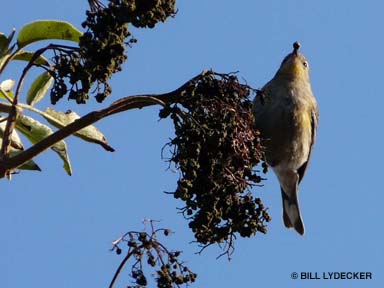
The warbler has a dried elderberry in its bill. In winter it migrates to the southern U.S. from northeastern portions of the country and Canada. (December 2008)
LINKS
CORNELL LAB OF ORNITHOLOGY NATURE ALI U.S. Fish and Wildlife Service Division of Bird Habitat Conservation: Bird ListUpdated June 25, 2015
© S. Honig (text)
© William Lydecker and © Andy Honig (photos)
